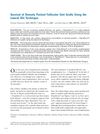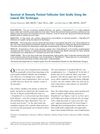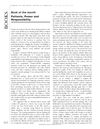mTOR regulator and immunosuppressant used more recently for anti-aging and hair regrowth
bioflavonoid found in plants with antioxidant and hair stimulating properties
signaling protein that, when suppressed, may grow hair by reducing inflammation and stem cell loss



